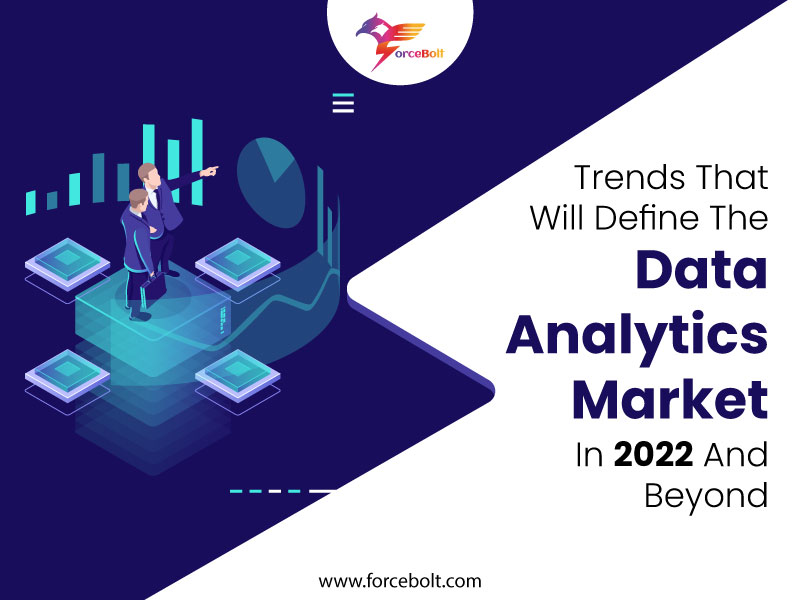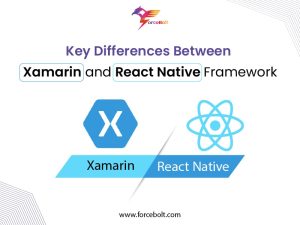Sharing is caring!
The Data Analytics market is skyrocketing. As per IDC, the worldwide spending on big data and business analytics (BDA) solutions reached $215.7 billion in 2021, the increase of 10.1% over 2020; the same applies to Data Analytics professionals, with soaring demand for them in 2022, as per U.S. Bureau of Labor Statistics with a 31 % increase till 2031.
Information continues to be an asset for various organizations, and analytics is a very much wanted competency. In the post-pandemic landscape, organizations seek to stay ahead of trends to thrive in their businesses and not to be left behind. However, organizations are already aware of the benefits of data analytics – improved decision-making, effective marketing, better customer service, and efficient operations.
This post delves into trends that define the Data Analytics market.
Trends that will Define the Data Analytics Market in 2022
Artificial Intelligence
Artificial, automation and machine learning are game-changers. AI is bringing real change in the field of Data Analytics. AI not only helps to augment human capabilities but also derives increased business value. The pandemic and remote work have brought about a data-driven culture in organizations with increased opportunities to track and measure data. So, AI-based analytics is on the rise.
No doubt there are plenty of applications for AI in businesses to make informed and effective decisions which leaves a positive impact on their business. An example is using Salesforce Einstein to identify a consumer’s lifetime value with the help of AI’s buyer persona modelling. Another good example to cite is improving customer satisfaction by reducing delivery time. Also, Machine learning and AI supports bots to bring data to existing workflows in a low-impact way.
Composable Data Analytics
In the post-pandemic stage, businesses need to have a complete end-to-end understanding of an organization and make intelligent decisions about their enterprise. Composable Data Analytics is for effective and intelligent, and faster decision-making. It is a process by which organizations combine and then consume analytics capabilities from multiple data sources throughout the organization.
The composable data and analytics aim to use various data, analytics, and artificial intelligence (AI) solutions that link data insights with business actions faster. Such tools have reusable, swappable modules and are deployable anywhere, including containers. It brings down the data centre cost even after your organisation has migrated to the cloud. As predicted by Gartner, by 2023, 60 % of organizations will build business applications based on components from three or more analytics solutions.
Data Fabric
Data fabric is about the end-to-end integration of various data pipelines and cloud environments through the use of intelligent and automated systems. It is a new way of thinking about the older problem of harnessing disparate data for analytics. The unified data architecture serves as an integrated layer connecting data endpoints and processes. This makes mission-critical data more discoverable and reusable for all environments of your organization, and that includes hybrid and multi-cloud environments. However, the real value of data fabric lies in the standardized data management that makes it easier for many users to get access of the data across different environments. Data Fabrics help you to hasten digital transformation and automation initiatives across businesses.
Structured Data Lakes
A data lake known as a centralized repository designed to serve the purpose of storage, processing, and securing huge amounts of structured, semistructured, and unstructured data. It puts an end to data siloes. It stores data in its native format and processes any variety of it without paying attention to size limits. The new trend is based on the emergence of a data lake to create data lakes with semistructured data and a little semantic consistency. Some indexing and inferring to optimize data analytics are required by building a common structure.
Data Democratization
Data Democratization refers to everybody having access to data with no gatekeepers, which creates a bottleneck at the gateway to the data. The access must be associated with an easy understanding of the data to be used to hasten decision-making and find opportunities for your organization. So, anyone can understand data anytime with barriers whatsoever to access or understanding.
Technology innovations are propelling Data Democratization. Data Democratization becomes a lot easier at the technical level with advances in virtualization. Data federation software also helps democratization by combining data from disparate sources in a virtual database to be used for business intelligence(BI) or other analysis. Cloud storage is also another way organizations are avoiding the data silos that prevented data democratization in the past. It uses cloud storage in a central location to store data. There are Self-service BI applications that make it easier for non-technical users to interpret data analysis.
There are many professionals who believe in data democratization. When you allow data access to anyone in your organization, it helps to empower the workforce at all levels of ownership and responsibility, and the data is used in decision-making. Any organization that opts for data democratization needs to have strong governance in place to ensure the careful management of data.
Conclusion
The Covid-19 has brought unprecedented levels of change in the business world. In the post-pandemic landscape, organizations are badly required to stay ahead of trends to thrive in their businesses. Their growth is fueled through information, and for this, they require to harness analytics as a competency to rise above their competitors. Staying ahead of these trends ensures that your business is never left behind.

Akshay Dhiman
Chief Technical Officer
The Chief Operating Officer of ForceBolt and a decisive leader who possesses a wide array of technical skills and management skills to implement operational changes by working at different levels of development. Being enthusiastic and technology proficient, he understands the importance of staying up-to-date with the latest technological transformations and provides competitive, scalable and efficient solutions. He has a good command of technical language and possesses good communication skills. Being a leader makes him a good team player, and he resonates with his priorities well.













